Printmaking
Stonecut in Nunavik, Northern Quebec
Short History
Printmaking started in 1961 in Nunavik as a cultural and economic project of the newly formed Puvirnituq Cooperative, following the example of the Kinngait print shop in Nunavut begun in 1957. Prints were also created in others Nunavik communities in Inujjuaq, Ivujivik, Kuujjuaraapik and Kangiqsujuaq.
Annual print collections were produced in Puvirnituq from 1962 through to 1989 when the Co-operative closed the print shop. Indeed, at the end of the 1980’s the prints production reduced because of the decline in demand from the international art market and suddenly stopped after the print shop had been destroyed by a fire.
Over the ten last year, Inuit artists and several cultural organizations launched into printmaking programs in Nunavik area. In this context, Avataq Cultural Institut works for the establishment of a new print shop in Puvirnituq, for example. Linked to the local Saputik Museum, this art studio will contribute to make artistic and cultural events lead as much as to provide new jobs in the community.
Artists and subjects
Davidialuk Alasuaq Amittuq, Charlie Sivuarapik, Joe Tallirunili, Leah Qumaluk, Qumaluk Tukalak, Jusi Papialuk, Johny Amittuq, Lucassie Tukalak, are one of these famous artists in Nunavik, drawers, sculptors as well as print makers.
Print subjects represent Inuit family and individual histories, as well as traditional myths. They show with pride the Arctic territories, their animals, spirit creatures from the shamanic world, the Inuit way of life from past to present. The prints are one of their important methods of storytelling, thus continuing the transmission of traditional knowledge.
Stone-cut technique
Stone-cut is the most current technique of printmaking in Nunavik and is an Inuit savoir-faire unique in the art world. Stone-cut consists in reproducing an original drawing through a flattened stone block, smoothed by sanding and filing. The negative image from the original drawing is traced onto the stone which is carved then following the outlines: relief areas match the coloured forms whereas the hollow of the stone are colourless. Then the printer master inks the carved stone (areas in relief), adds over it a paper and presses it by hand. Finally, the paper is removed from the stone and the print is done.
Printmaking a stone-cut is a long process and with this method every print is unique as stone block is inked with different colours in different ways each time. No more than fifty editions are usually made from the same stone block.
The Kinngait Printmaking Studios
More than 1200 people live in Kinngait and most families count with one's one artist or more as carver, printer or drawer. The Kinngait hamlet is well-known on the international art market as the major art centre in the Canadian Arctic.
Kinngait-miut (people who live in Kinngait) launched out in printmaking creation fifty years ago when the first studio opened there. In 1959 was found the West-Baffin Eskimo Co-operative by the Inuit own selves to control the artworks distribution outside the Inuit territories and locally redistribute the profit of the sales.
Prints are realized in two studios depending the printmaking technique used: there is a studio for stonecut and another one for lithograph where work between five and ten printmakers in each studio.
The prints are one of their important methods of storytelling, thus continuing the transmission of traditional knowledge. These prints record Inuit family and individual histories, or their feelings about oral myths. They show with pride the Inuit territories, their animals and spirit creatures from the shamanic world.
Reference:
RYAN BOYD, Leslie, 2007, Cape Dorset prints, a retrospective: fifty years of printmaking at the Kinngait studios, San Francisco, Pomegranate.
Celebrating 50th anniversary of printmaking in Kinngait
Kinngait, an Inuit community located in Nunavut more known as Cape Dorset (its English name) and commonly called “Dorset”, is well-known as the artistic capital among Inuit circumpolar territories (Alaska, Canada and Greenland) on the international art market.
This year, its inhabitants, called Kinngait-miut, celebrate the fiftieth anniversary of the West Baffin Eskimo Co-operative’s establishment. The Co-operative was established in 1959 by Inuit people who lived in Kinngait, in order to organize and control the artworks’ distribution on the international artistic sphere, but also to give income to the artists and locally share the profit of sold prints; all Kinngaimmiut would enjoy.
Thus, the new 2009 Kinngait prints collection coincide with the West Baffin Eskimo Co-operative’s fiftieth anniversary. In order to underline this event, an exhibition takes place at the National museum of Canada from October 2009 to January 2010: “Uuturautiit: Cape Dorset Celebrates 50 Years of Printmaking”.
Reference:
RYAN BOYD, Leslie, 2007, Cape Dorset prints, a retrospective: fifty years of printmaking at the Kinngait studios, San Francisco, Pomegranate.
West Baffin Eskimo Co-operative, 2009, Cape Dorset prints. Celebrating 50, 1959-2009, catalogue annuel d’estampe de Cape Dorset 2009.
The Dorset Fine Arts: www.dorsetfinearts.com
Printmaking among Inuit communities*
[*To get more information about Inuit communities and their art, please, see “Inuit art communities” category]
The Kinngait Printmaking Studios (Nunavut)
More than 1200 people live in Kinngait and most families count with one's one artist or more as carver, printer or drawer. The Kinngait hamlet is well-known on the international art market as the major art centre in the Canadian Arctic.
Kinngait-miut (people who live in Kinngait) launched out in printmaking creation fifty years ago when the first studio opened there. In 1959 was found the West-Baffin Eskimo Co-operative by the Inuit own selves to control the artworks distribution outside the Inuit territories and locally redistribute the profit of the sales.
Prints are realized in two studios depending the printmaking technique used: there is a studio for stonecut and another one for lithograph where work between five and ten printmakers in each studio.
The prints are one of their important methods of storytelling, thus continuing the transmission of traditional knowledge. These prints record Inuit family and individual histories, or their feelings about oral myths. They show with pride the Inuit territories, their animals and spirit creatures from the shamanic world.
Printmaking from Ulukhaqtuuq (Northwest Territories)
Ulukhaqtuuq is the only Western Arctic community with a printmaking program. This artistic practice came about in response to the growing need for economic development at first, such as other Inuit communities in the Canadian Arctic. Inuit artists and Father Henri Tardy, a priest who ran the Catholic mission at Holman from 1949 to the early 1980s, were inspired by the success of the arts and crafts enterprises in other Arctic communities like Kinngait and Panniqtuuq. In Nunavut and Puvirnituq in Nunavik, in order to form the Holman Eskimo Co-operative in 1961.
By the 1960’s, the artists in Ulukhaqtuuq used several printmaking techniques: acid-free etching, lithography, stencil, stonecut, woodcut. Initially, sealskin was used to produce stencils. Since 198, the main techniques have been stencilling and lithography which allow for the detailed, naturalistic depictions that are now the main interest of Ulukhaqtuuq artists.
Traditional subjects as hunting scenes, oral myths and past daily life are depicted by famous artists from Ulukhaqtuuq as: Flossie Papilluq (1904-1994), Mona Ohoveluk (1935-1892), Agnès Nanogak Goose (1925-2001), Alec Aliknak Banksland (1928-1998), Stanley Ilonak Klengenberg (1964-1999), Patrick Akovak Klenbengerg (1944-1976), Helen Kalvak (1901-1984), Mark Emerak (1901-1983), Victor Ekootak (1916-1965).
Harry Igutaq (1925-), Mabel Ninngiuq (1938-), Mary K. Okheena (1957-), Peter Palvik (1960-), Louie Nigiyok (1960-), Roberta Memogana (1971-), Susie Malgokak (1955-), Peter Malgokak (1954-), Elsie Klengenberg (1946-), William Kagyut (1919-), Trex Kangoak Goose (1965-), Julia Manoyok Ekpakohak (1968-), Harry Egotak (1925-) are artists who make drawings and prints with vivid colours and sophisticated compositions. Some of them also make sculptures even if this practice is not very developed in Ulukhaqtuuq.
Printmaking in Qamanittuaq (Nunavut)
The most frequently used printmaking techniques in Qamanittuaq is stonecut and stencil, often in combination, supplemented in later years by serigraphy, linocut and woodcut. Textile art is also practiced by women like Jessie Urnaq, Janet Kigusiuq and Irene Avaalaaqiaq who sew wall hanging from drawings, as a natural extension of their work preparing skin and using them to sew clothing. Not much carvers work in Qamanittuaq.
Because Qamanittuaq is located inland, the iconographic subjects, both in graphic and sculptural domains feature caribou and muskoxen rather than marine mammals (whale, beluga, walrus and seal), the Kiviuk myth rather than the Takanaaluk or Uinigumasuittuq (Sedna) story.
Traditional myths are very popular among Qamanittuaq’s artists such as drawers and printmakers: Simon Tukumi (Tookoomi), Victoria Mamnguqsualuk, William Noah, Irene Avalaaqiaq, Luke Anguhadluk, Jessie Urnaq (Oornak), Janet Kigusiuq as well as carvers like Jonhy Iquliq, Tuna Iqulik, Matthew Agigaaq and Barnabus Arnasunngaq.
Printmaking in Panniqtuuq (Nunavut)
The Panniqtuuq print shop originated in 1969, with government support and financial assistant, as part of the Canadian's government effort to create cash-based employment in developing Inuit communities. In 1973, the Print Shop published, under the auspices of the Uqqurmiut Centre for Arts and Crafts, its first collection of limited-edition prints.
The annual Panniqtuuq Print Collection promotes Inuit culture with imagery that celebrates the land and traditional Inuit life, knowledge and myths. Each year, drawers collaborate with printmakers on the creation of a new collection of limited-edition prints. Josea Maniapik, Andrew Qappik, Jolly Atagooyuuk, Leetia Alivaktuk, Abigail Ootoova, Tommy Angakak, Noah Maniapik, Annie Kilabuk, Lipa Pitsiulak, Enookie Akulukjuk, Geela Sowdluapik, Jacoposie Tiglik, Simon Shaimayk and Davidee Akpalialuk are some of the artists.
Printmaking in Puvirnituq (Nunavik)
Printmaking took roots in Nunavik in the early 1960s when a printmaking workshop was set up in Puvirnituq. By the end of the 1980s, the production of prints fell off due to decline in demand, and ended abruptly when a fire destroyed the Puvirnituq workshop.
Famous drawers and printmakers from Puvirnituq like Davidialuk Alasua Amittu, Josie Papialuk, Leah Qumaluk, Aisa Amittu, Joe Talirulini, Thomassie, Daniel Inukpuk, Paulosie Sivuark and Tivi Etook Echallok are the best references in this artistic domain.
In the last few years, Nunavik artists and various cultural organizations as Avataq Cultural Institute, launched a movement to try to revive the art of printmaking in the region thus opening a new print studio, in tandem with the Saputik Museum.

